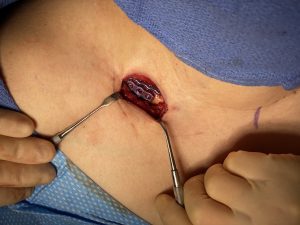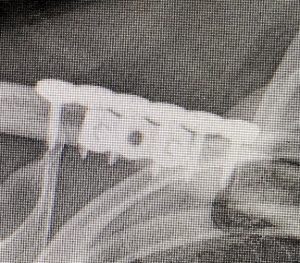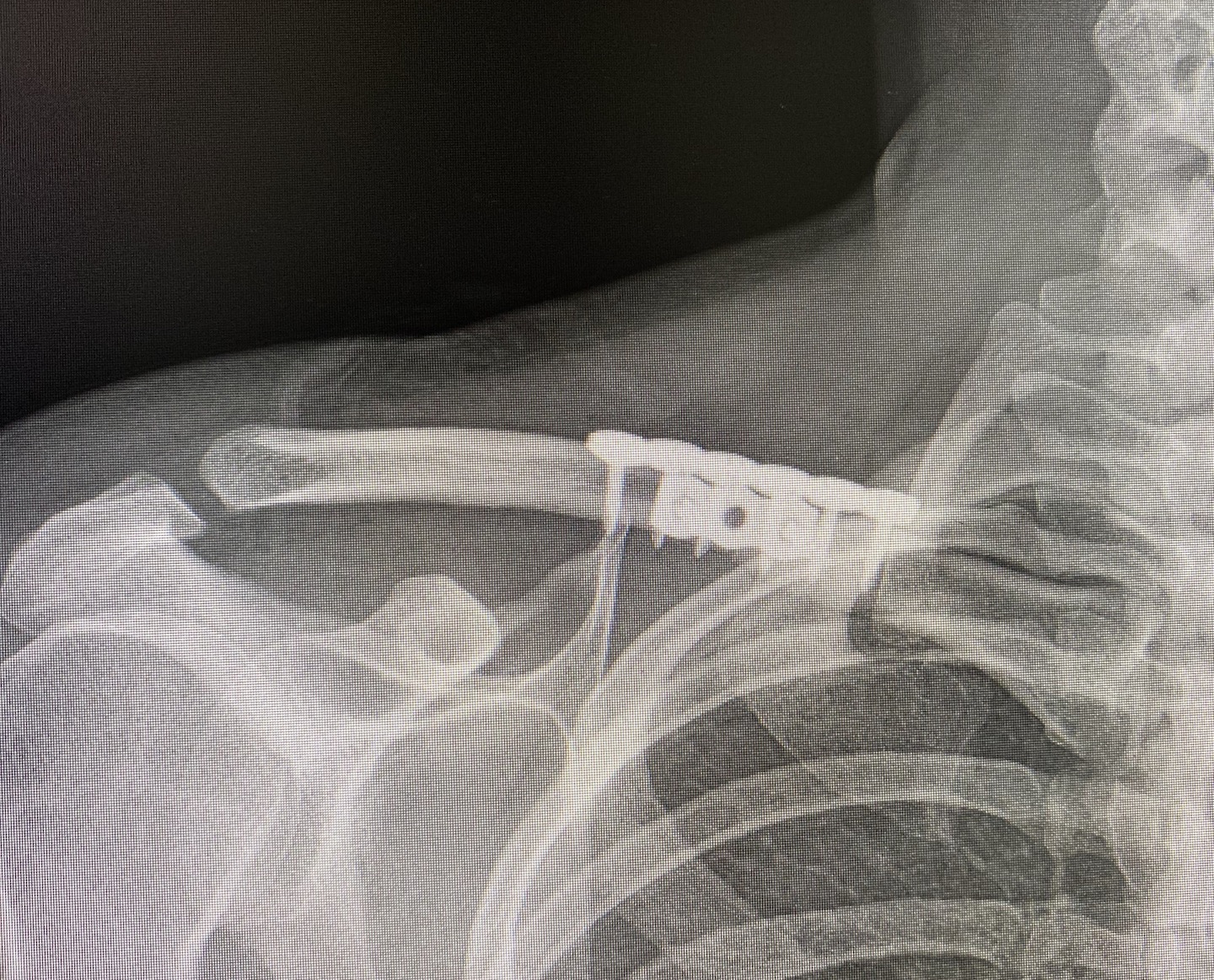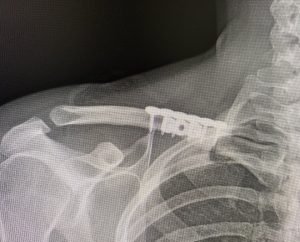In shoulder narrowing surgery a segment of the inner third of the clavicle bone is taken to create the effect. The two ends of the bone are put back together using a plate and screws. There are different types of plates and screws to use from various manufacturers but as long as they are stout enough to resist bending or fracture of the plate they are adequate to protect the bone while healing.

To illustrate the value of clavicle double plate fixation in shoulder narrowing surgery, I recently had a patient sustained some form of trauma to her right shoulder and she was concerned that her hardware may have become loose or disengaged. An x-ray taken three weeks after the surgery showed good alignment of the clavicle and intact hardware…which speaks to the additional protection afforded by the use of two plates.

Multi-dimensional plate fixation provides both intra- and postoperative assurance of maintained bony alignment in a surgery in which both arms are going to be limited in range of motion for a prolonged period of time. There will be a tendency to eventually unintentionally reach for things or be exposed to potential traumatic stresses on the fixation sites. While displacement of the bone segments is always possible, double plate fixation provides the best insurance against a complication that would require re-operation.
Dr. Barry Eppley
Indianapolis, Indiana




